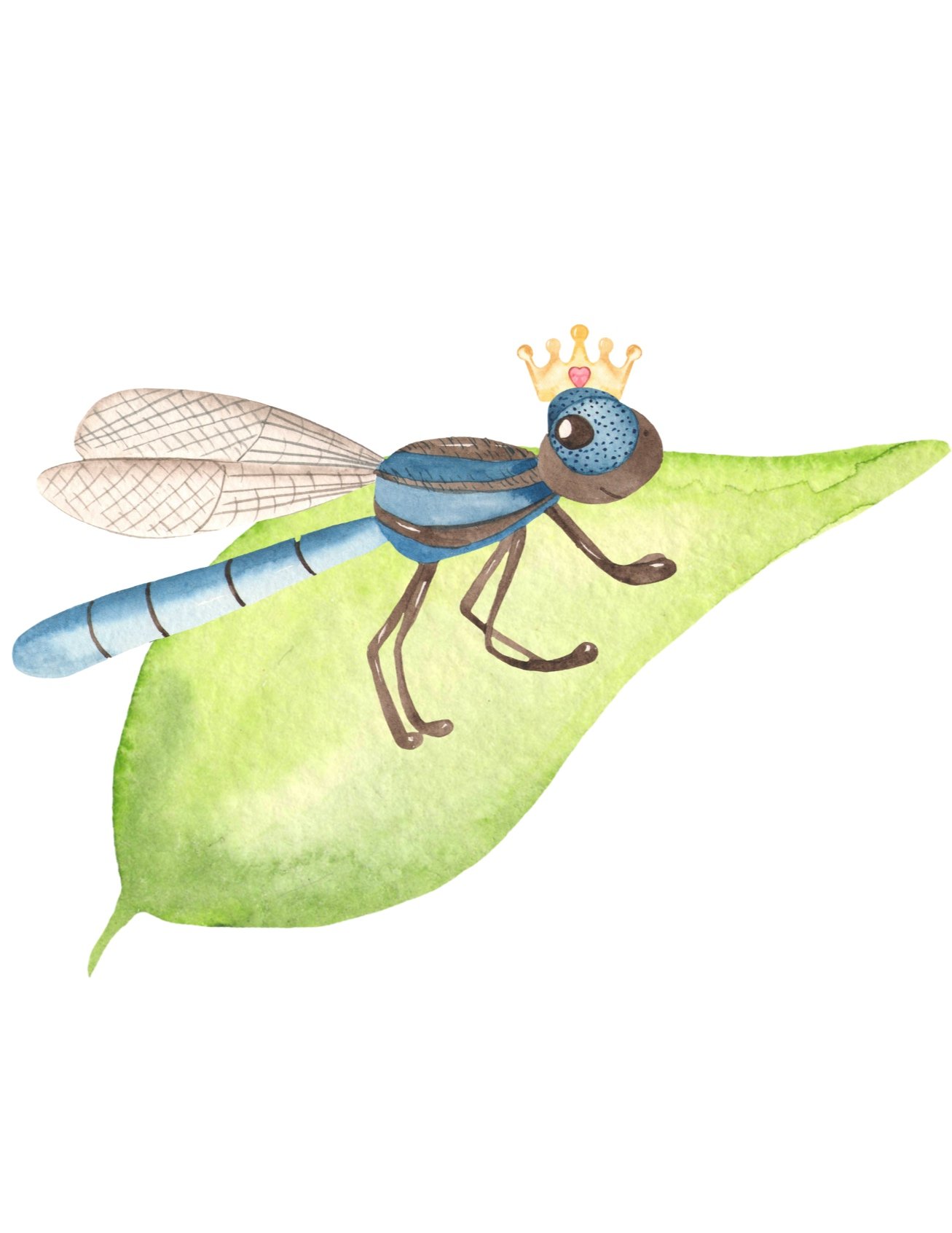Royal River Cruiser
Today’s adventure takes us to the banks of a beautiful river in Eastern USA. We are zooming in on an incredible insect with mad flying skills!
If you’ve ever seen a dragonfly before and wanted to learn more, these are the facts for you!
LET’S GO!
Critter At A Glance
What makes them unique? Royal River Cruisers are one of the many species of dragonflies. They are about 3 inches long, have shiny black and yellow bodies and HUGE green eyes. They are known for their skilled flying above the surface of many bodies of water. They are able to fly straight down the middle of a stream close to the water, or even straight down the road.
What is their life cycle like? Mothers lay their eggs by dipping the tip of their abdomen in the water as they fly over it. Adult dragonflies, as we know, do not live IN water. But, dragonflies live near water for a special reason; their young are aquatic and they have to be in water to complete their lifecycles. Baby larvae molt (shed) many times before they are finally an adult living out of water. It can take up to 3 years for this to happen.
What do they eat? These critters eat many insect larvae, such as mosquitoes or flies, when they are small. As they grow they can eat pretty much any soft bodied grown insect!
What eats them? Dragonflies are preyed on by many mammals like lizards, aquatic amphibians, and birds.
Let’s ~ FLY~ into a royal story about the amazing Royal River Cruiser
named Princess Elise.
Are you ready for an out of this world fact?
The G-force of a dragonfly making a turn can be as high as 9X the force of gravity. When flying in a straight line, it can be as high as 4G. Just think about it…most humans will pass out around 4G’s - 5G’s!
Be Sure to Join our CritterQ and start your…
SUMMER STORY CHALLENGE!
Can you draw a picture of what you think Elise looked like flying on her coronation day? Use the video below for help or inspiration!
Share your drawings on INSTAGRAM or FACEBOOK! #heymrjim
“Dragonflies of Northern Virginia.” Dragonflies of Northern Virginia, http://dragonfliesnva.com. Accessed 1 July 2022.
“Macromiidae - River Cruisers | Wildlife Journal Junior.” New Hampshire’s PBS Station, https://nhpbs.org/wild/Macromiidae.asp. Accessed 1 July 2022.
“Royal River Cruiser (Macromia Taeniolata).” Greg Lasley Nature Photography, http://greglasley.com/content/NorthAmericanDragonfliesandDamselflies/RoyalRiverCruiser.php. Accessed 1 July 2022.
“Western River Cruiser.” Welcome to the Digital Atlas of Idaho, https://digitalatlas.cose.isu.edu/bio/insects/drgnfly/macrfam/mama/mamafr.htm. Accessed 1 July 2022.
Wildlife, Tara. “10 Astounding Things You Should Know About Dragonflies.” Tara Wildlife, https://www.facebook.com/tarawildlife/, 3 Oct. 2017, https://www.tarawildlife.com/10-astounding-things-you-should-know-about-the-dragonfly/#:~:text=Dragonflies%20serve%20as%20food%20for,%2C%20bats%2C%20and%20even%20spiders.
“WOS: Macromia Taeniolata.” The Wisconsin Aquatic and Terrestrial Resources Inventory, https://wiatri.net/inventory/odonata/speciesaccounts/SpeciesDetail.cfm?TaxaID=166. Accessed 1 July 2022.


